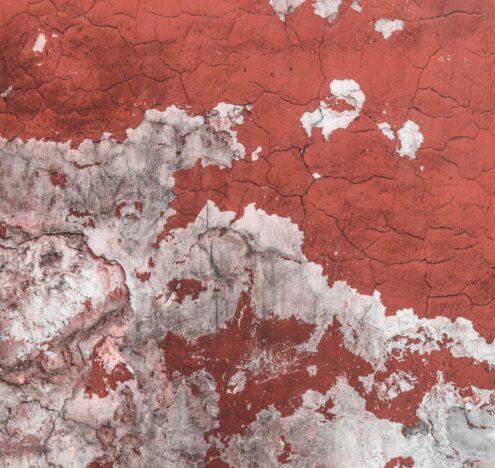The cliche has always been to refer back to where, exactly, you were when the towers fell. Politicians riff on it in their speeches, waxing poetic on both the indelible horror and the surge of patriotic duty they felt. Journalists to this day extract every ounce of prose from the images they absorbed on cable news. Late-night comedians pause from their usual monologues to soberly address their audience with relatable anecdotes of being awestruck on their morning commute. Very few, however, can attest to being uniquely prepared to join the tip of the Praetorian spear as the World Trade Center collapsed.
On the CBS News podcast “Intelligence Matters,” a hagiographic back-and-forth between ex-intelligence experts and former CIA director host Michael Morell, retired CIA senior Operations Office Phil Reilly relayed this distinctive experience. When the first tower was hit, Reilly was taking language classes to prepare for his new role as a station chief. “I was on the phone that day to my former office that dealt with Special Operations — Special Activities at the time — Center asking to, you know, ‘Put me in coach. I’m ready to come back.’ And that’s exactly what I did that day,” Reilly explains shortly before an ad notes that the programming you’re enjoying is sponsored by the Raytheon Company.
Reilly will go down in history as one of the first Americans to enter Afghanistan following the events of Sept. 11, 2001. Along with seven other CIA paramilitary officers, Reilly was flown in on a Russian Mi-17 helicopter to make contact with the Northern Alliance — the only major anti-Taliban resistance in the region — and conduct operations that would gather intelligence, conduct covert acts of extreme violence, surveil Taliban strongholds, and eventually arm a slew of warlords that were more than eager to become a counterinsurgency backed by American firepower and Pentagon capital.
US-backed paramilitary forces were responsible for countless war crimes, and their presence in civilian areas proved devastating for local populations in Afghanistan. None of them have been held accountable.
Left out of the jovial exchanges between Reilly and Morell is how these opaque operations are a preeminent form of conducting modern warfare: A method with high civilian casualties, no judicial oversight, and a means of preventing the kind of public relations disaster that many in the military intelligence community maintain (and their most sympathetic allies in the press) was the central reason for America’s failure in Vietnam.
Paramilitary tactics — which involves the usage of individuals (in this case both trained CIA operatives, police or security forces, and indigenous warlords) who function like professional military but without any of the oversight or bureaucratic note-keeping — are inherently unaccountable. They create an environment that promotes war crimes, human rights abuses, and conceals the true cost of occupation or geopolitical subterfuge. Conversely, while it has been pertinent to critique the deployment of airstrikes, drones, and private military contractors in the occupation of Afghanistan, not enough culpability was placed on the CIA and Special Forces, who oversaw the use of domestic paramilitary units that, throughout the 20-year US intervention, were granted carte blanche to brutalize, abduct, and murder Afghan civilians with impunity.
WHEN RELIANCE ON PARAMILITARY FORCES STARTED
Paramilitary operations have been a function of US imperial interventions since the 1899 occupation of the Philippines — and the subsequent war that broke out between Philippine nationalists and their newly self-appointed rulers. But it was not until the US military ran up against the irregular, guerilla tactics of the Viet Cong that it became an unprecedented stratagem.
The Viet Cong relied on both a military and political wing to establish influence over their native territory, the latter of which was tasked with winning over South Vietnamese peasants and establishing local leadership that would be sympathetic to their liberation effort. These outreach tactics proved successful, as countless villages would be employed as weapons caches or safe havens for communist insurgents. Since the political wing was composed almost entirely of non-combatants, the US military would not, legally speaking, be able to target them with conventional soldiers. As such, the CIA developed the Phoenix Program, a secretive counterinsurgency scheme that “neutralized” civilians through murder, torture, and sexual violence. Foreshadowing what would unfold in Afghanistan, CIA operatives, mercenaries, and those indigenous to South Vietnam were recruited to eliminate individuals that could have any association with the political efforts of the Viet Cong.
Of the 19,534 targets that were nullified — 4,832 were killed — a mere 150 had any association with the upper echelons of Viet Cong leadership. The vast majority were civilians with little influence over the Viet Cong’s political network; the blatant outcomes of a bounty program (and war) that incentivized a body count regardless of its relation to civilian casualties.
By all accounts, these cloak-and-dagger paramilitary operations only contributed to the resentment felt amongst villagers that were supposedly being protected from communist aggression. The indignation of otherwise agnostic paysans, created with every rice patty burned, every village displaced, every newly vaporized civilian would contribute to the downfall of South Vietnam. And the effectiveness of paramilitary tactics — that coupled relentless carnage with Potemkin-style national development — were called into question. But, luckily for those eager to justify foreign intervention without sullying America’s supposed human rights commitments, the unique circumstances of Afghanistan would provide ample rationale for the retrenchment of this unique style of imperial warfare.
BEHIND THE SCENES IN AFGHANISTAN
From the very beginning of the Afghan occupation, paramilitary tactics were the essential tool in the US military’s tactical arsenal. Given that there was no formal Afghanistan military or police force following the collapse of the original Taliban government, warlords and private militia were used to fill the void, and they worked intimately with US military intelligence. The only qualifications seemed to be a distaste for Taliban rule and willingness to commit acts of horrific violence, and finding recruits was not difficult considering the economic deprivation within the country. It was disclosed that “fighters receive as much as $400 a month in salary, twice what a soldier in the Afghan security forces earns. Commanders earn $1,000 or more a month, as much as an Afghan army general.”
Individual warlords became fabulously wealthy from US government contracts, and their followers were permitted to ransack the homes of the Afghan civilians that they raided. Not only did they carry out military operations, but militia groups were granted lucrative deals to defend the construction projects of private US firms tasked (on no-bid agreements) with modernizing the country’s infrastructure; though sometimes it was simply easier to bribe the Taliban into guaranteeing safe passage.
Likewise, the initial CIA paramilitary groups had direct ties to the government, as Ahmed Wali Karzai, the half-brother of then-President Hamid Karzai, was the central strongman in the Kandahar region during the initial overthrow of the first Taliban government. He would go on to assist in the founding of the Kandahar Strike Force. Many members of these groups were of Pashtun ethnicity, as their native homeland in southeastern Afghanistan was uniquely impacted by the Taliban insurgency and key leaders of the tribe had been expelled by the Taliban following the collapse of the Democratic Republic of Afghanistan. However, paramilitaries could be found everywhere from the poppy fields of Helmand to the peaks of the Hindu Kush mountains that overlook Kunar.
Eventually, the most notoriously violent paramilitary outfits in the country — groups like the Kandahar Strike Force and the Khost Protection Force — would be formed with the explicit approval and backing of the CIA and US Special Forces. While these units are small in number and produced (in terms of the total number of recorded civilian deaths) limited casualties compared to airstrikes, their raids were especially deadly: CIA-trained paramilitary units proved far more likely to kill civilians than regular Afghan forces.
Similar paramilitary units that engaged in capture-kill missions, committed extrajudicial killings, and launched signature night raids on civilian households went by more innocuous names like “NDS-01” or “NDS-02” due to their connection with Afghanistan’s then-newly formed intelligence bureau, the National Directorate of Security. Some were folded into the Afghan Local Police, while other paramilitary groups were ad-hoc and concentrated within hyper-specific areas — though neither subgenres had the same sort of backing that CIA-sourced forces received.
Afghan civilians, rightfully so, used little discretion when referring to paramilitary groups and simply referred to them as “Campaign.” They saw little difference between these forces and the Taliban. As the journalist Andrew Quilty reported:
[CIA advisers] not only train Afghan unit members, but also choose their targets, which the Americans call ‘jackpots’; issue detailed pre-mission briefings; and accompany Afghan paramilitaries on the ground during raids. The Afghans and Americans are ferried to remote villages at night by American helicopters, and American assault aircraft hover overhead while they conduct their raids, providing lethal firepower that is sometimes directed at health clinics, madrassa dormitories, or civilian homes.”
The paramilitary strategy can be seen as an extension of the “Rumsfeld Doctrine,” whose namesake sought to use private-sector fat cutting to create a lean, mean US military that relied heavily on combat technology and airstrikes, and limited the amount of US ground troops. As Anand Gopal, a journalist who covered the Afghan conflict and authored No Good Men Among the Living, explained in a interview on Dec. 28, 2021:
“This wasn’t simply done just to avoid accountability, it was actually done as a way to reimagine what it meant to fight wars: Which was that we’re going to outsource most of the risk and the violence to other actors — either to airplanes or proxy forces. And in doing so, we can have this really light military force. We won’t have this bloated Pentagon budget, though that never changed. … But the thing is they don’t actually mind the budget.”
Gopal continued:
“What they didn’t want is the state being the ones carrying out these duties because that meant Big Government. A lot of these forces — a lot of these people carrying out paramilitary operations — were doing jobs that the US military would have done.”
The Rumsfeld doctrine would augur the neoliberal turn within the US military. Soon independent contractors were providing scores of services for the Department of Defense. Even the paramilitaries got in on the action. According to Gopal, small US aid projects — like building school houses — were sometimes funneled through militias after they set up shop in rural hamlets. Eventually, this strategy would produce an entirely clandestine paramilitary army.
The exact number of paramilitary members is difficult to calculate due to the nature of such groups, but some estimates place the total at just over 200,000 (when including police and security forces that were often a revolving door for paramilitary recruits), while Gopal places the number closer to 100,000 — with “60,000 to 80,000 armed private security employees” and “tens of thousands of private militiamen working directly for the Afghan government, the US special forces, or the CIA.” For context, the total number of formal Afghan security forces and military personnel was approximately 135,000 army soldiers and 110,000 police. Additionally, even at the height of Obama’s troop surge between November 2009 to September 2010, the US military personnel count in the country spiked at 100,000.
While the Kandahar Strike Force and the Khost Protection Force were small units, these CIA-trained paramilitary units were far more likely to kill civilians than regular Afghan forces.
The consequences of this policy cannot be overstated. US-backed paramilitary forces were responsible for countless war crimes, and their presence in civilian areas proved devastating for local populations — especially in the rural areas where 74% of all Afghans reside. While it is, given the lack of public records, almost impossible to determine how many civilians were murdered by paramilitary operatives during raids or combat, we do have specifics on raids of villages that were documented by international NGOs and journalists. For example, a Paktia village experienced a brutal massacre in August of 2019, when a paramilitary outfit organized by the CIA murdered eight men who were visiting family for the Eid al Adha holiday. The victims had no relationship with the Taliban and other villagers, like a 60-year old elder and his young adult nephew, were shot in the face. According to a Human Rights Watch paper that documented the story, such raids — which are supposed to find Taliban operatives — have “become a daily fact of life for many communities.” The report goes on to say that 14 such incidents were recorded by the organization between 2017 to 2019.
These were not isolated incidents. Another illustration comes from an Afghan woman who told The New Yorker that a US-backed paramilitary leader named Amir Dado (who had originally been removed by the first Taliban government) began terrorizing her village around 2003. Dado requisitioned:
“that two young men either pay a tax or join his private militia, which he maintained despite holding his official post. When they refused, his fighters beat them to death, stringing their bodies up from a tree…In another village, Dado’s forces went from house to house, executing people suspected of being Taliban; an elderly scholar who’d never belonged to the movement was shot dead.”
WHERE’S THE ACCOUNTABILITY?
Given the sheer volume and deep history of the paramilitary presence within Afghanistan, it’s not hard to imagine that such micro-crises were, given the data we have on civilian killings, replicated countless times. Yet, hardly any paramilitary outfits or their handlers have been held responsible for their cold-blooded callousness. In fact, quite the opposite occurred, as CIA-backed death squads and their families received an exclusive evacuation to the US following the fall of Kabul.
Yet, regardless of the heinous acts of any particular paramilitary, the blame falls squarely on those that oversaw the actual occupation and the institutions that lobbied for the exporting of malfeasance. “As much as I want to criticize the US military for going too far in certain instances, the reality is that the US military was very much restrained in a lot of incidents,” said Adam Weinstein, a Research Fellow at the Quincy Institute for Responsible Statecraft, in a Jan. 6, 2022. He continued:
“The US military did take, in some cases, extraordinary measures to prevent civilian deaths. But then what do you do when you have a military that wants to protect that value, but still wants to take the gloves off? Well, you outsource it to the paramilitaries.”
The onus, then, falls on the bipartisan support for such militia initiatives. It was not just Rumsfeld, after all, that advocated for “innovation” within the warfare construct. Obama appointees like former CIA Director David Petraeus and Under Secretary of Defense Michèle Flournoy aggressively advocated for counterinsurgency programs that pushed “armed social work.” The very nature of the counterinsurgency doctrine requires the use of paramilitary outfits. And the congressional committees, that are supposed to hold executive technocrats in check, failed to perform the “Leahy vetting” which prevents US military aid from going to groups with poor human rights records.
The tragedies created by the paramilitary approach to Afghanistan produced a latent carnage that will never be fully grasped. But it is urgent for us to remember that the consequences of saber-rattling and foreign intervention go far beyond the spectacle of drone bombs and humvees. It’s the minute, unrecorded atrocities that pile up the fastest, and it’s no surprise that the Afghan body politic — the only one truly keeping the score — wearily accepted the archaic terms of Taliban rule.
Caleb Brennan is a writer and reporter based in Minneapolis. His work can also be found in The New Republic, The Nation, VICE, and The Progressive.





















